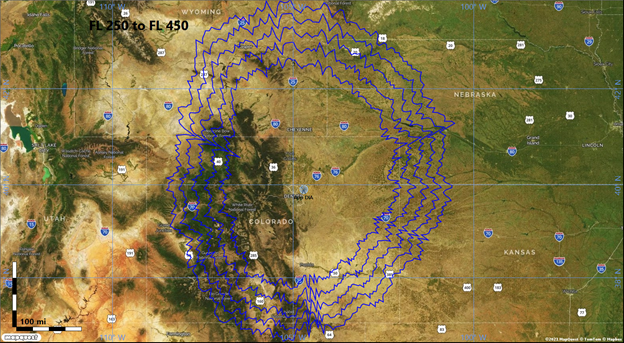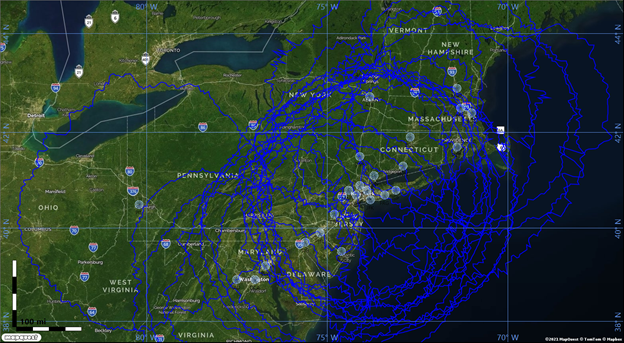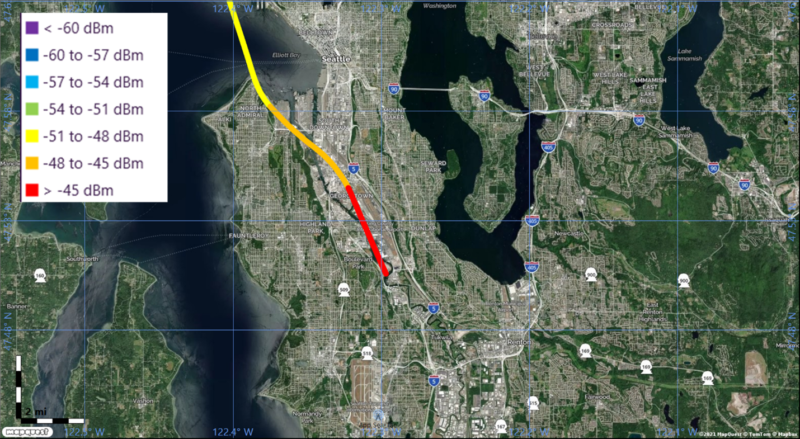Air-to-Ground and Ground-to-Air
While TAP is most often utilized for the design and analysis of terrestrial links, it is also often used for air-to-ground and ground-to-air link topologies. Contour-type area coverage studies can be used to show the extent of coverage at different flight levels. The Bullington knife-edge diffraction propagation model is the most popular for these applications, though Longley-Rice may still be applicable for UAVs and low altitude operations, up to 3 km AGL.

The AutoCoverage module facilitates the process of setting up and running coverage studies from multiple sites. The contours can be overlaid to show the overall coverage.

A target-type coverage study can handle unique altitudes for the target study points, enabling RF coverage analysis for 3D flight paths, such as runaway approach and/or departure.

